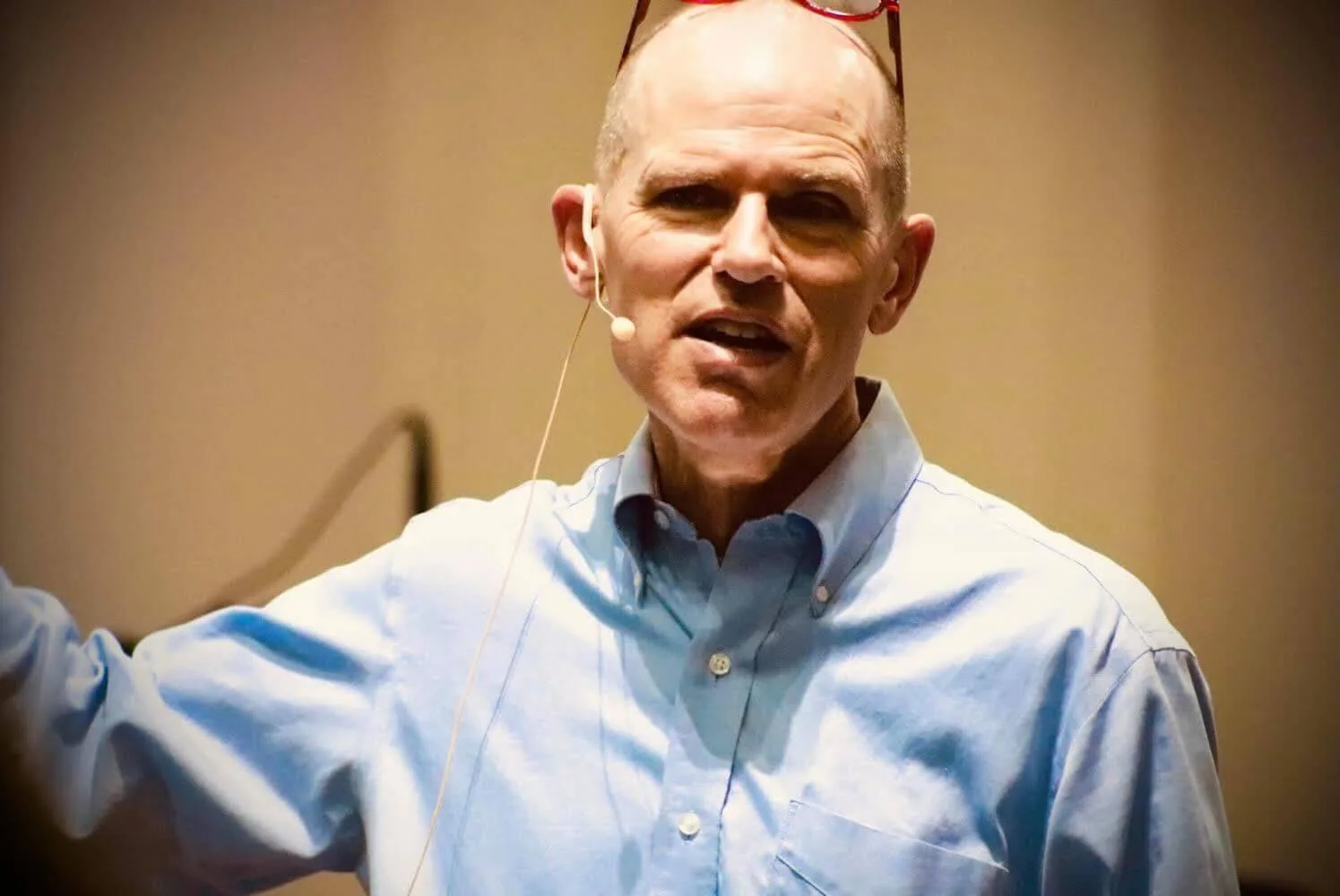
Pastor Ned Lenhart leads a service at Living Water Lutheran Church in Cameron. (Photo provided)
Workforce changes imposed by the pandemic have led some people to return to their old jobs with renewed optimism, better conditions.
During the COVID pandemic, a wave of Americans quit their jobs in what became known as “The Great Resignation.”
They left for many reasons—dissatisfied with their work-life balance, or feeling overworked and underpaid. Despite the record-breaking numbers of workers nationwide who resigned during the first two years of the pandemic, the number of people working in Wisconsin has not only recovered but is at an all-time high, according to the “State of Working Wisconsin” report released Thursday by COWS, previously known more formally as the University of Wisconsin Center on Wisconsin Studies.
For some, like Ned Lenhart, The Great Resignation turned out to be, “The Great Time Out,” which gave him a chance to reassess and reenter the workforce with a refreshed perspective.
Lenhart worked as a pastor at Living Water Church in Cameron for 13 years. He planned to retire at age 60, but the pandemic pushed him to reconsider.
“I had to hold off a bit,” Lenhart said. “I didn’t want to leave them high and dry at a really difficult time.”
Eventually, the pastor announced that he would retire a year later, giving the church time to find a replacement. But even after an extensive search, leaders didn’t find a qualified candidate to take on the role. Lenhart left his position anyway, in the fall of 2021, with no one to step in permanently.
Although Lenhart retired at a time when many Americans felt fed up with their employers, he never felt that way.
“I had so much fun. I had a hard time not working,” he said. “I don’t know that I’ve ever had good work-life balance. I try to stay centred in what is most important and that is my relationship with God, being a good husband and father, a good neighbor.”
During retirement, Lenhart and his wife sold their house and made plans to refurbish one they purchased. He did some hunting and fishing and took a road trip to Florida.
But after eight months, Lenhart lost the bet he made with his wife. As she suspected would be the case, he missed working and wanted to go back. In January he met with his bishop and began the interview process to re-enter his role as pastor at his former congregation, taking on duties and a schedule a little less demanding than the one that had him planning to retire.
His second career as pastor of Living Water Church began in May.

“I wanted to take advantage of having fresh eyes,” Lenhart said. “I wanted to receive that gift of an unbiased perspective on who they were, what they were doing, how they were interacting with each other, and how they were pursuing their mission. I didn’t want to just jump in and say I’m back and just resume life as it was.”
Lenhart sees his “Great Resignation” as a unique opportunity to step back and truly discover what he wanted for his future. Unlike others who found new employment or didn’t return to the workforce, he was able to return to the position he loved and the place that was, “home.”
“This is a real gift to me as a leader, to be able to look at you and say, ‘Who are you now? Given the changes that happened in eight months, what kind of leadership do you need from me? How have I changed and how am I different?’” he reflected.
While some workers like Lenhart returned to the workforce, others never left but still sought improved conditions in what had become a seller’s market for labor. While membership in organized labor remains far below the workforce percentages of the past, workers in small shops are pushing for collective bargaining rights. Wisconsin examples include Colectivo Coffee shops and video game developer Raven Software.
Following the phenomenon of economic collapse and bounceback, Wisconsin’s unemployment rate reached a historic low during 2022, and COWS data shows the number of workers hit an all-time high. In July, the state’s labor force participation rate was 66.5%, higher than pre-pandemic.
Yet, although unemployment rates are low, data shows significant racial and gender disparities in terms of salaries and job opportunities.
In 2021, Wisconsin’s Black unemployment was more than twice the white rate, totalling 13.7% while the white unemployment rate was 5.4%.
Between 2018 and 2021, the median real wage grew by more than $2 per hour, which is the strongest increase in real wages in this century. However, data shows unequal pay between races, with white men and women earning significantly more than Black and Hispanic men and women.
In 2021, white men (median wage $23.11) and white women ($20.81) posted the highest hourly wages, with the wages of Black men ($17.68), Black women ($17.17), and Hispanic men ($17.12) about one-fourth lower, or more than $5 per hour behind. Hispanic women’s wages ($15.51) were a full one-third below white men’s wages in 2021.
Politics

What’s the difference between Eric Hovde and Sen. Tammy Baldwin on the issues?
The Democratic incumbent will point to specific accomplishments while the Republican challenger will outline general concerns he would address....

Who Is Tammy Baldwin?
Getting to know the contenders for this November’s US Senate election. [Editor’s Note: Part of a series that profiles the candidates and issues in...
Local News

Stop and smell these native Wisconsin flowers this Earth Day
Spring has sprung — and here in Wisconsin, the signs are everywhere! From warmer weather and longer days to birds returning to your backyard trees....

Your guide to the 2024 Blue Ox Music Festival in Eau Claire
Eau Claire and art go hand in hand. The city is home to a multitude of sculptures, murals, and music events — including several annual showcases,...





